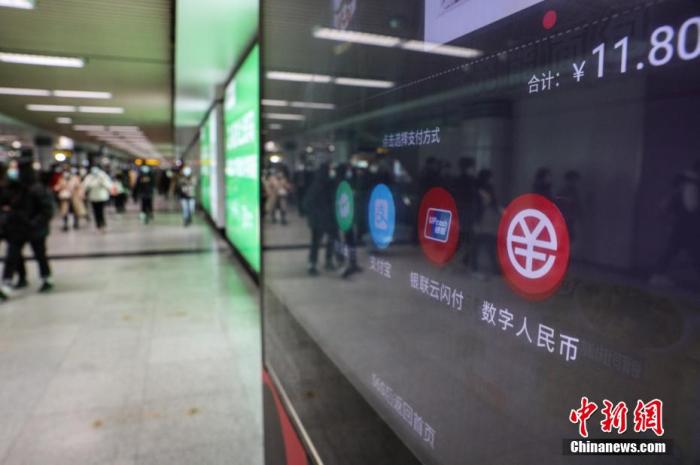Chinanews.com, July 8th. Fan Yifei, vice governor of the People’s Bank of China, introduced at the State Council’s policy briefing on the 8th that at present, digital renminbi is in the process of piloting, mainly through whitelist invitations, and whitelist users have reached 10 million , The Beijing Winter Olympics scene is the key area of the next pilot.
Data map: Digital RMB payment test enters the Shanghai Metro.
Photo by Zhang Hengwei
On the 8th, the State Council Information Office held a regular policy briefing to introduce financial institutions’ fee reductions to benefit enterprises and people, and answered reporters’ questions.
At the meeting, a reporter asked: Recently, the central bank has interviewed banks and payment institutions about virtual currency speculation, and relevant departments have also cleaned up and rectified a company.
What are the next steps of the central bank in this regard?
Will these companies that provide services for virtual currency-related activities also take the next step at the national level?
Fan Yifei pointed out that digital currency issuers can be divided into private digital currencies and central bank digital currencies.
The typical representatives of private digital currencies are currencies such as Bitcoin, as well as various so-called "stable currencies" launched.
These currencies have become a speculative tool in their own right. When this happens in the market, there are also potential risks that threaten financial security and social stability.
At the same time, "stable currency" has also become a payment tool for some money laundering and illegal economic activities.
The so-called "stable coins" of some commercial organizations, especially the global "stable coins", may bring risks and challenges to the international monetary system and payment and settlement system.
"We are still quite worried about this issue, so we have taken some measures." Fan Yifei said.
Regarding private digital currencies, Fan Yifei said, “For these private digital currencies, whether they exist as monetary credit or not, we are still observing and studying. At the same time, we must vigorously promote central bank digital currencies.”
Fan Yifei pointed out that the central bank’s digital currency can also be divided into two types. One is a wholesale central bank currency, which is mainly issued to commercial banks and other institutional entities and is mostly used for large-value settlements. The other is a retail central bank currency, mainly for Issuance to the public can be used for daily transactions.
Most studies believe that the wholesale central bank digital currency will not have an impact on the existing financial system.
The differences in the understanding of the retail central bank digital currency are relatively large. The debate on whether the retail central bank digital currency will cause financial disintermediation, will weaken the monetary policy, and whether it will intensify bank runs, etc., is more concentrated.
In this regard, Fan Yifei said, “We are also highly concerned about these issues. We are currently in the process of piloting. What impact these digital renminbi will have on the monetary system, monetary policy, and financial stability has always been highly concerned, and we have also worked hard to pass Business, technology, and policy design ensure that the impact of the digital renminbi system on these macro aspects is minimized. We are still confident that this work will continue to expand the scope of the pilot program and increase the scope of the pilot program."

